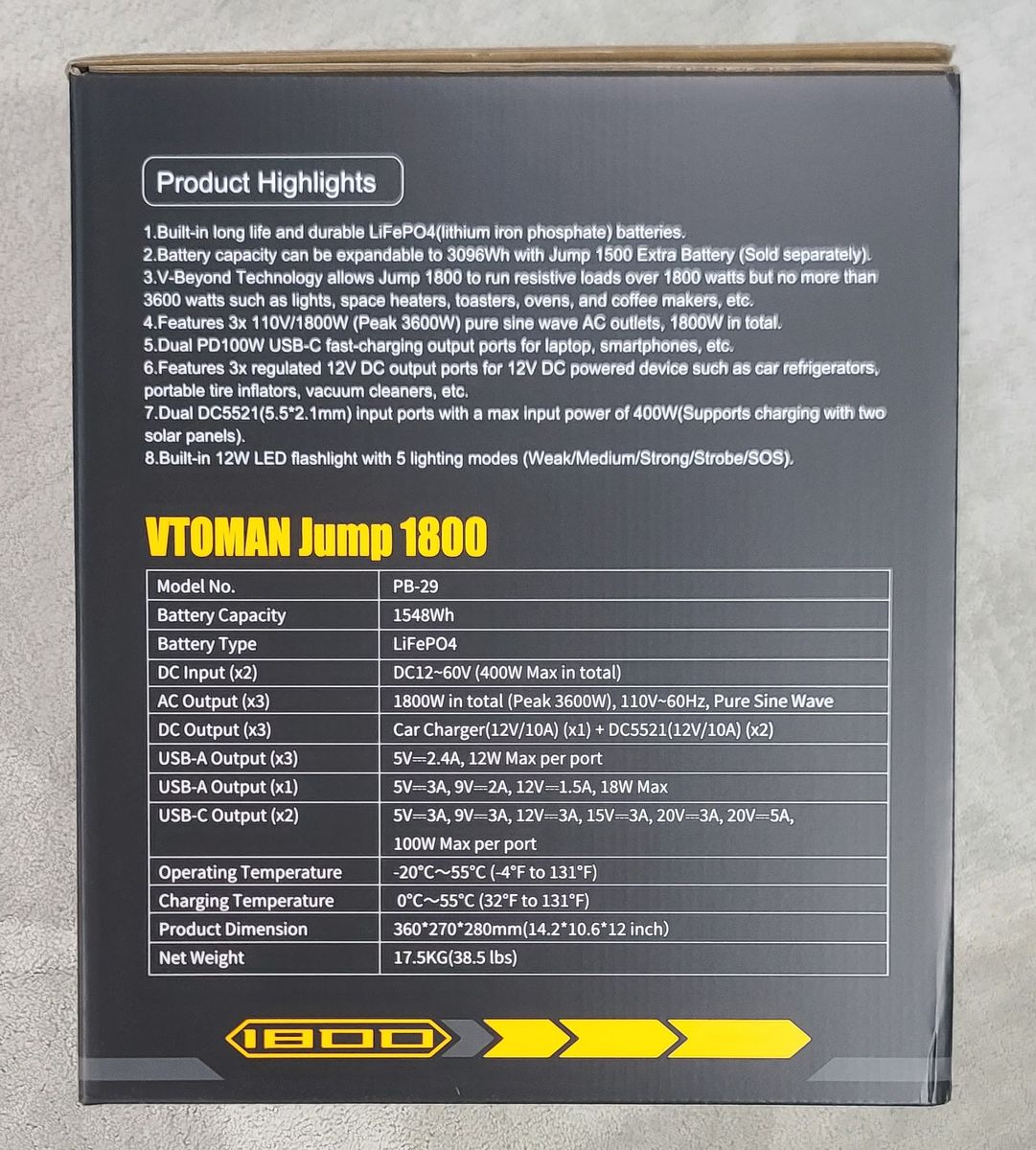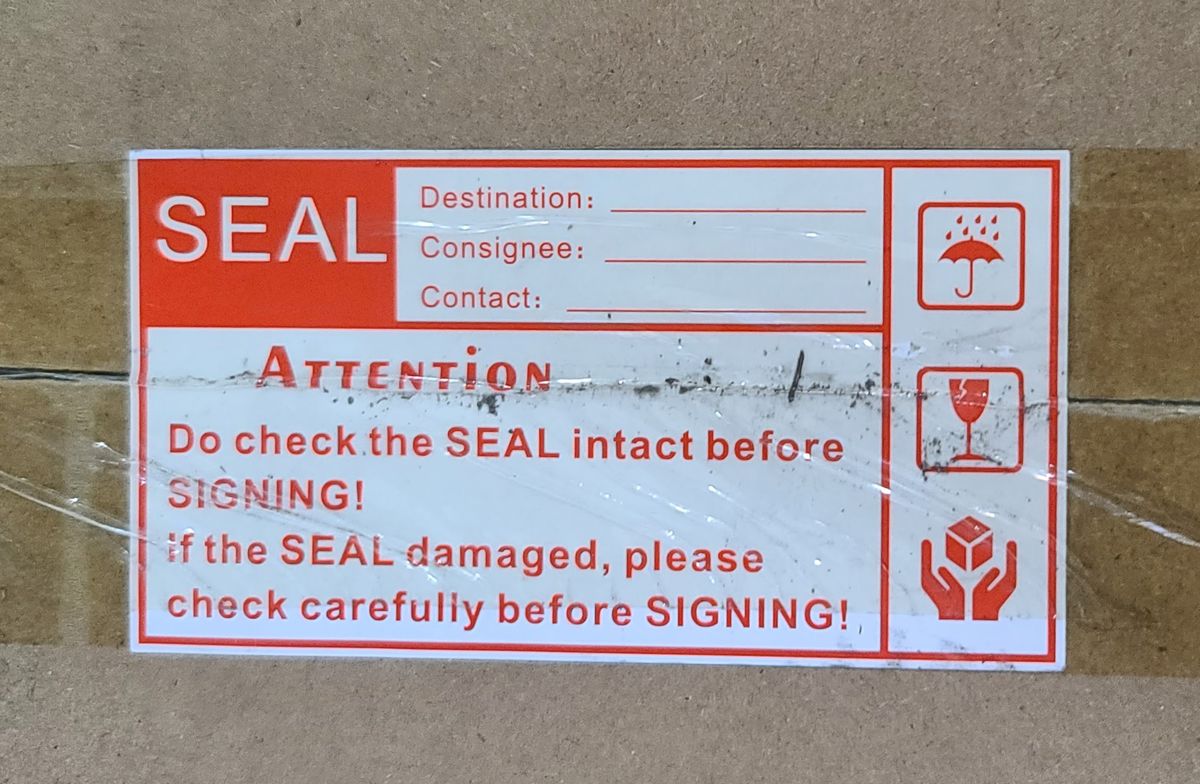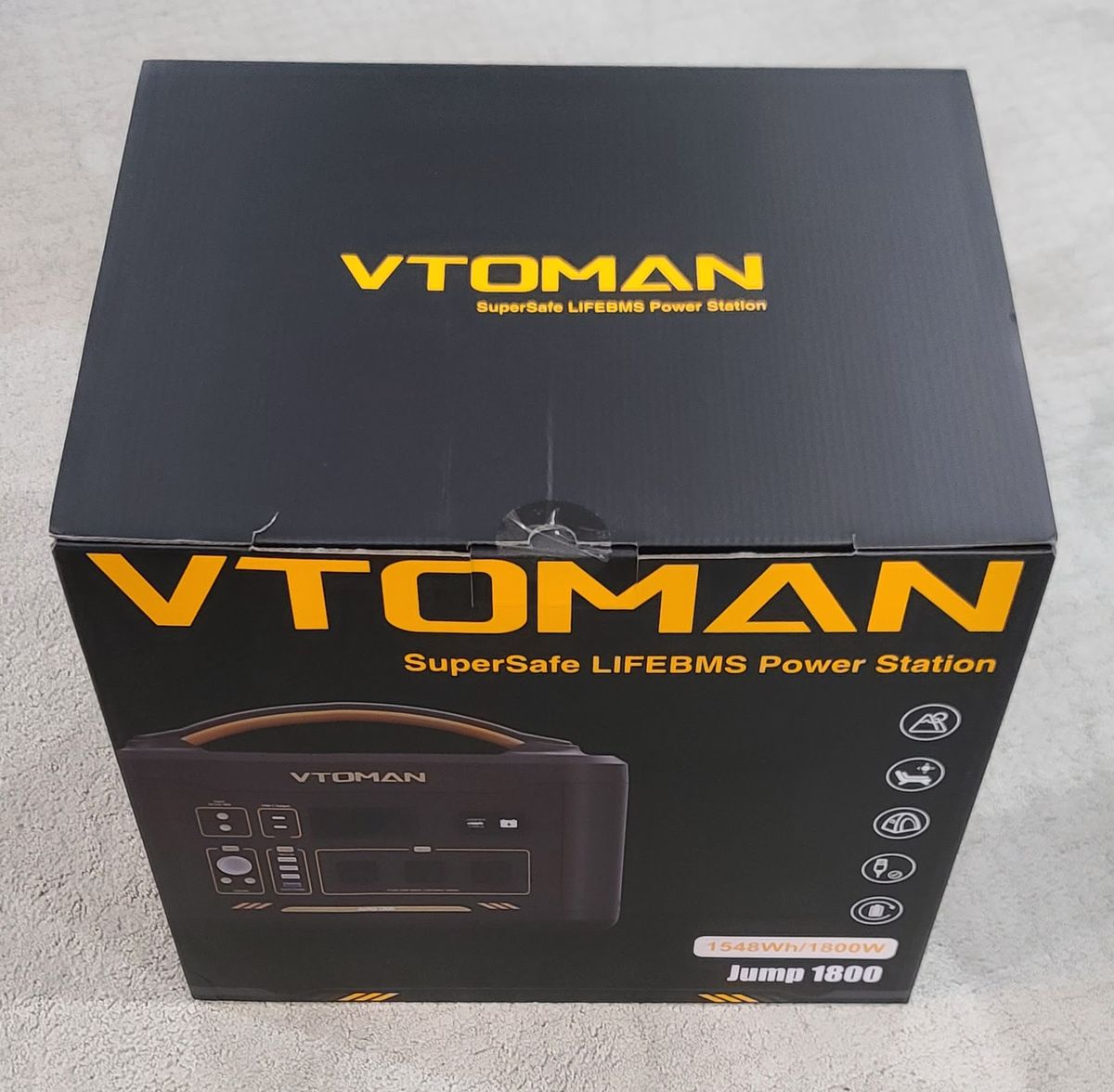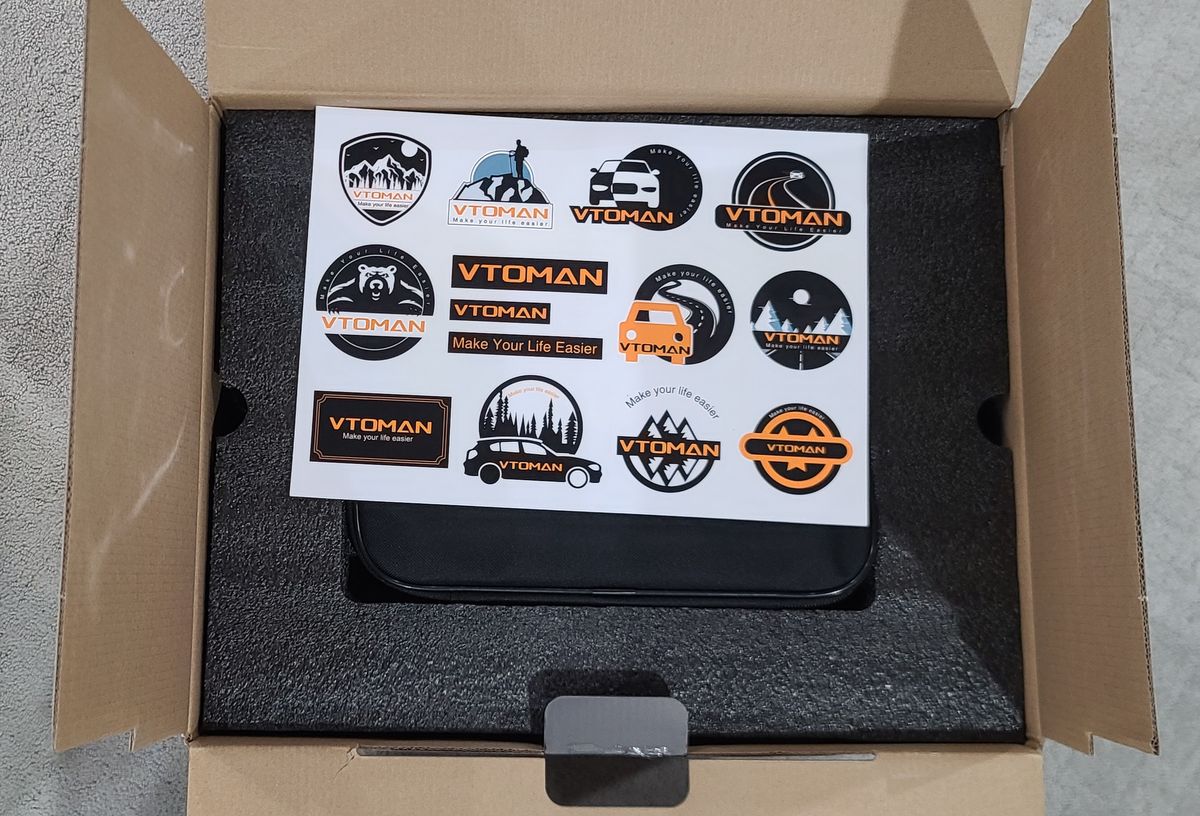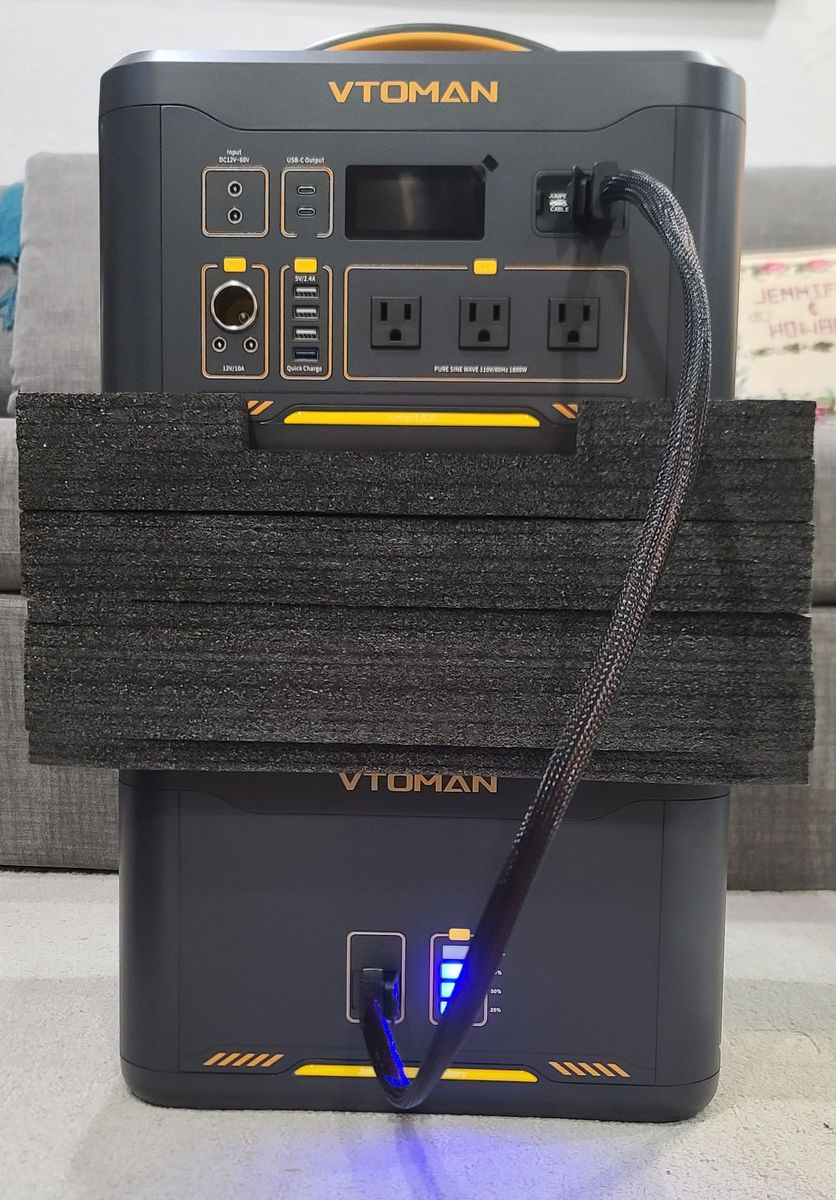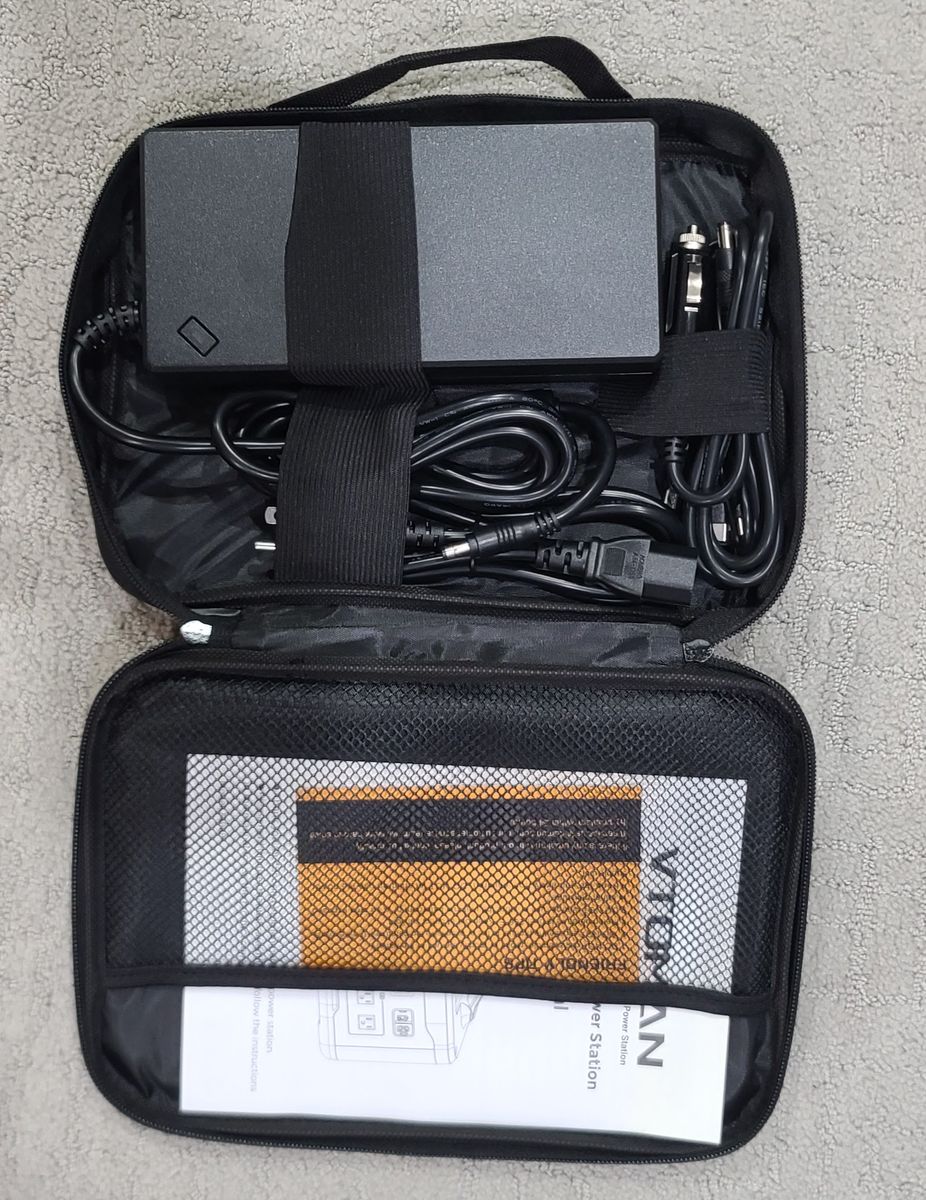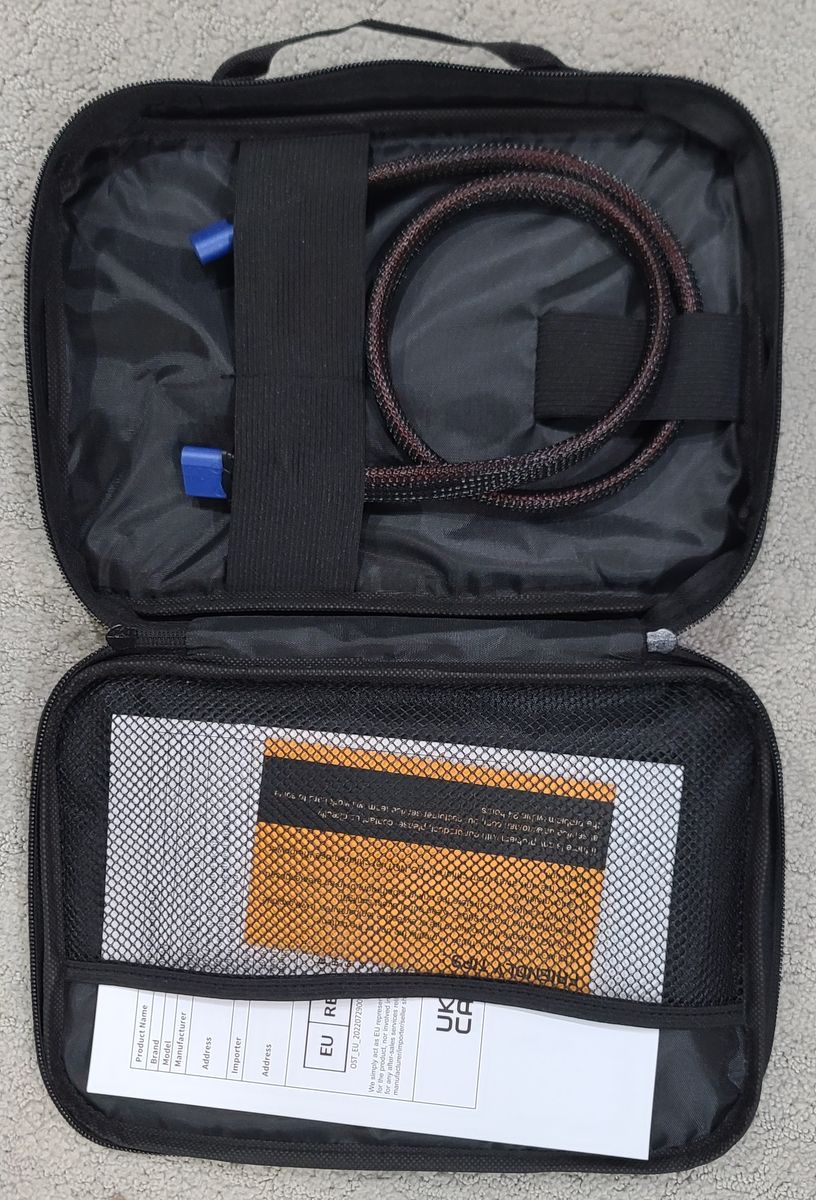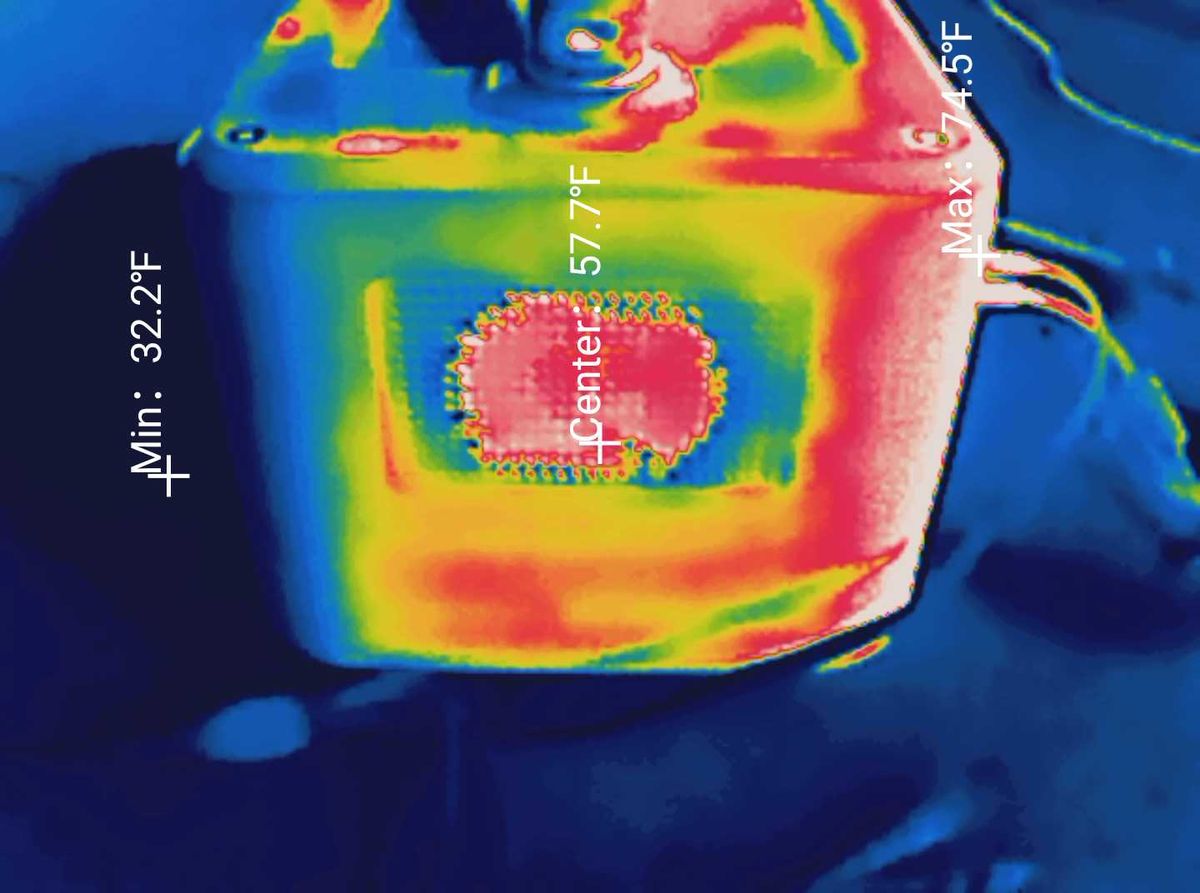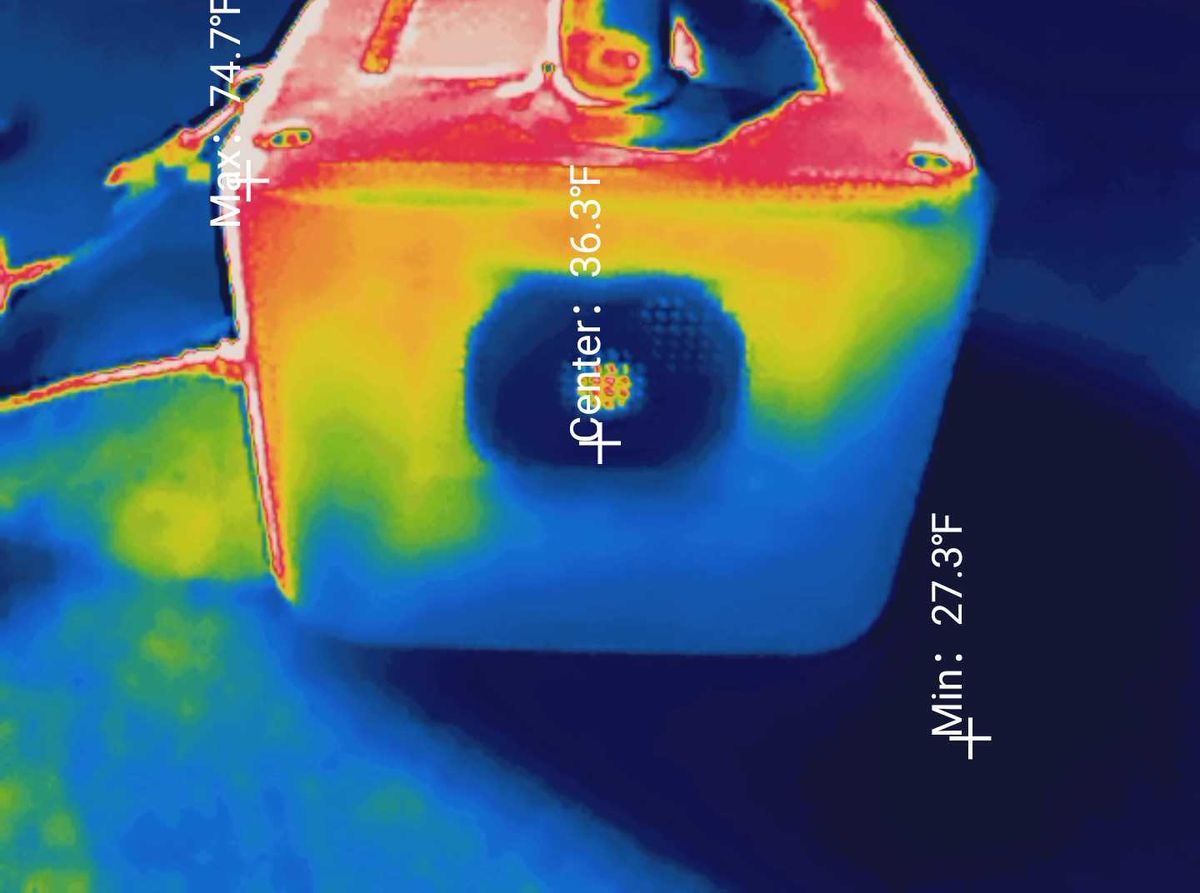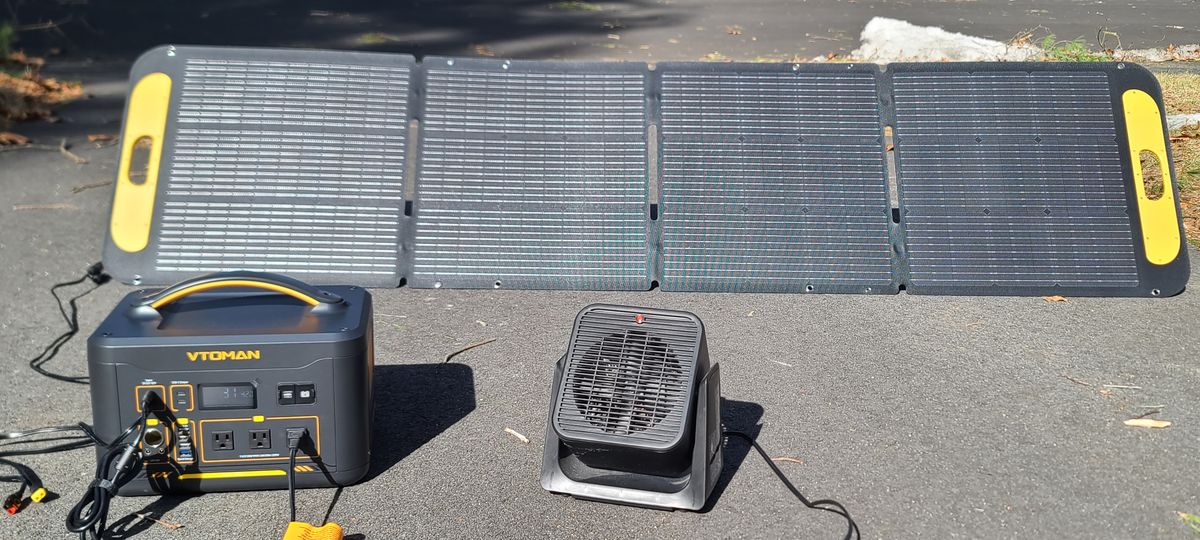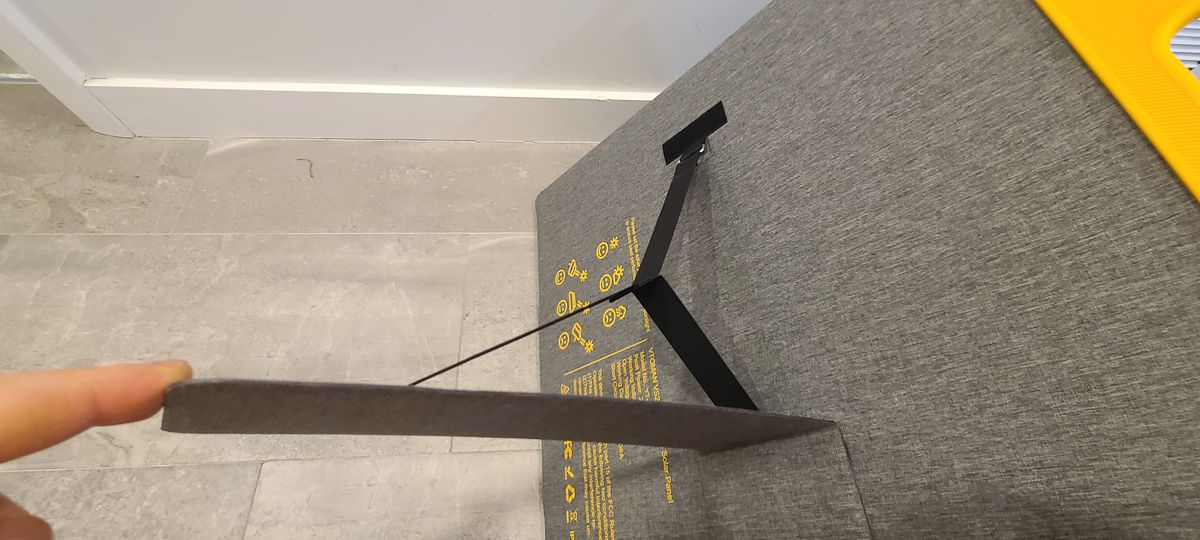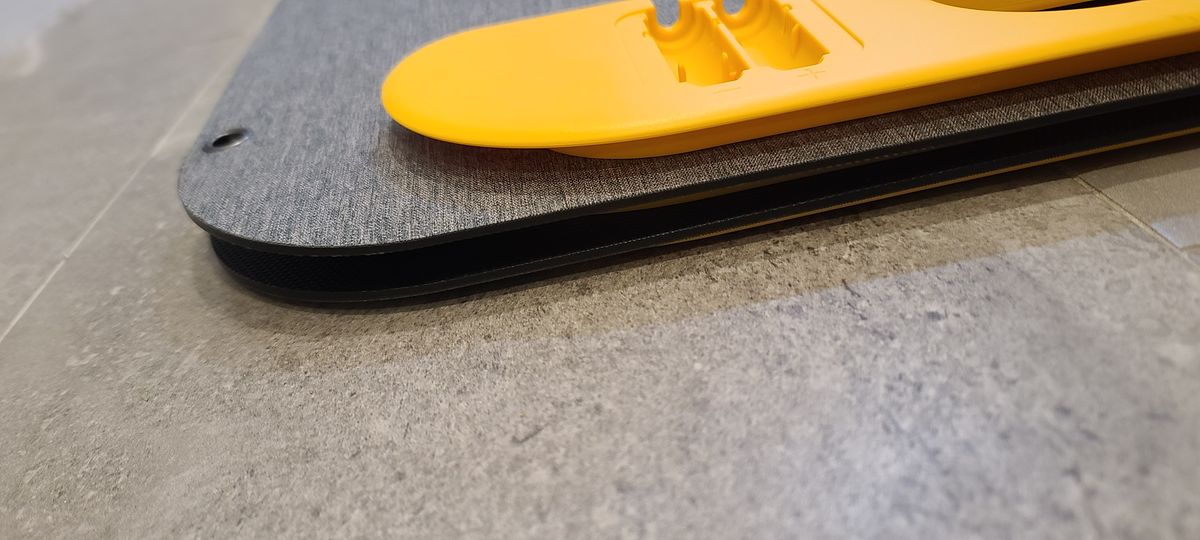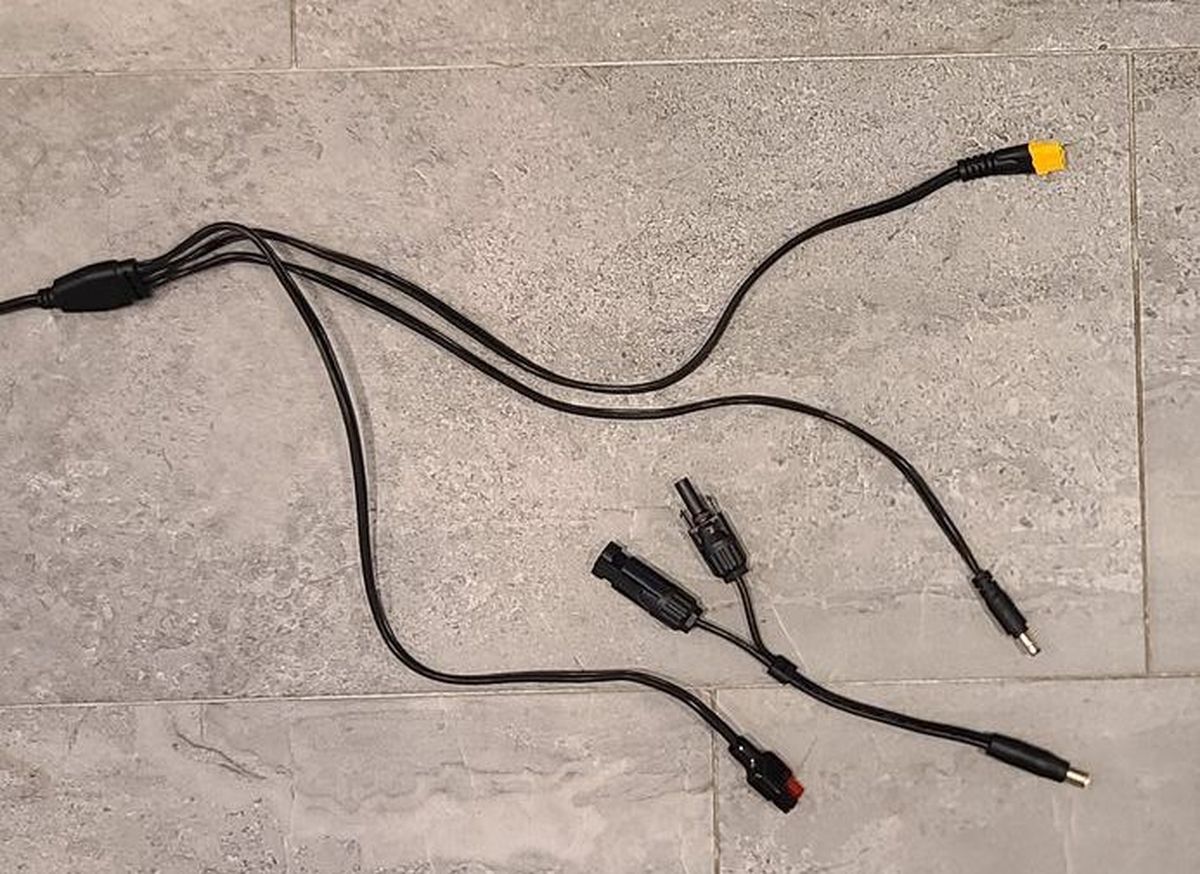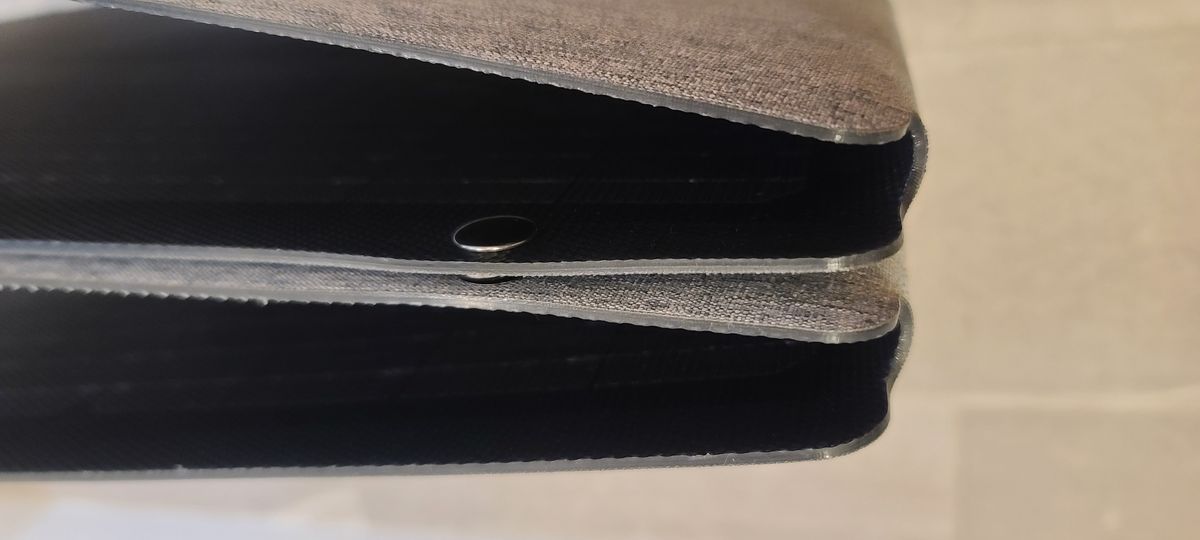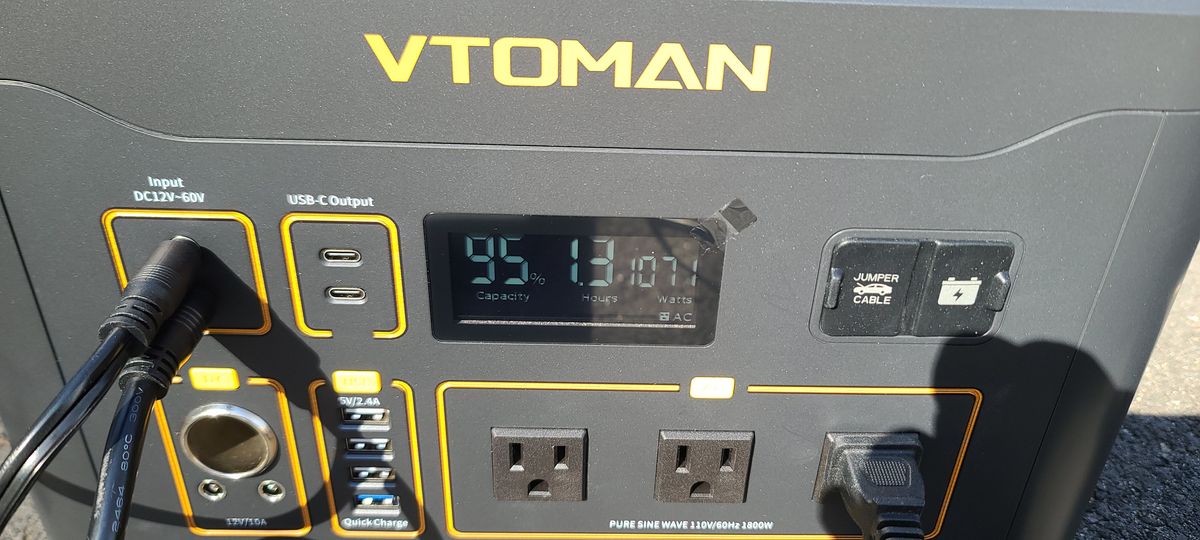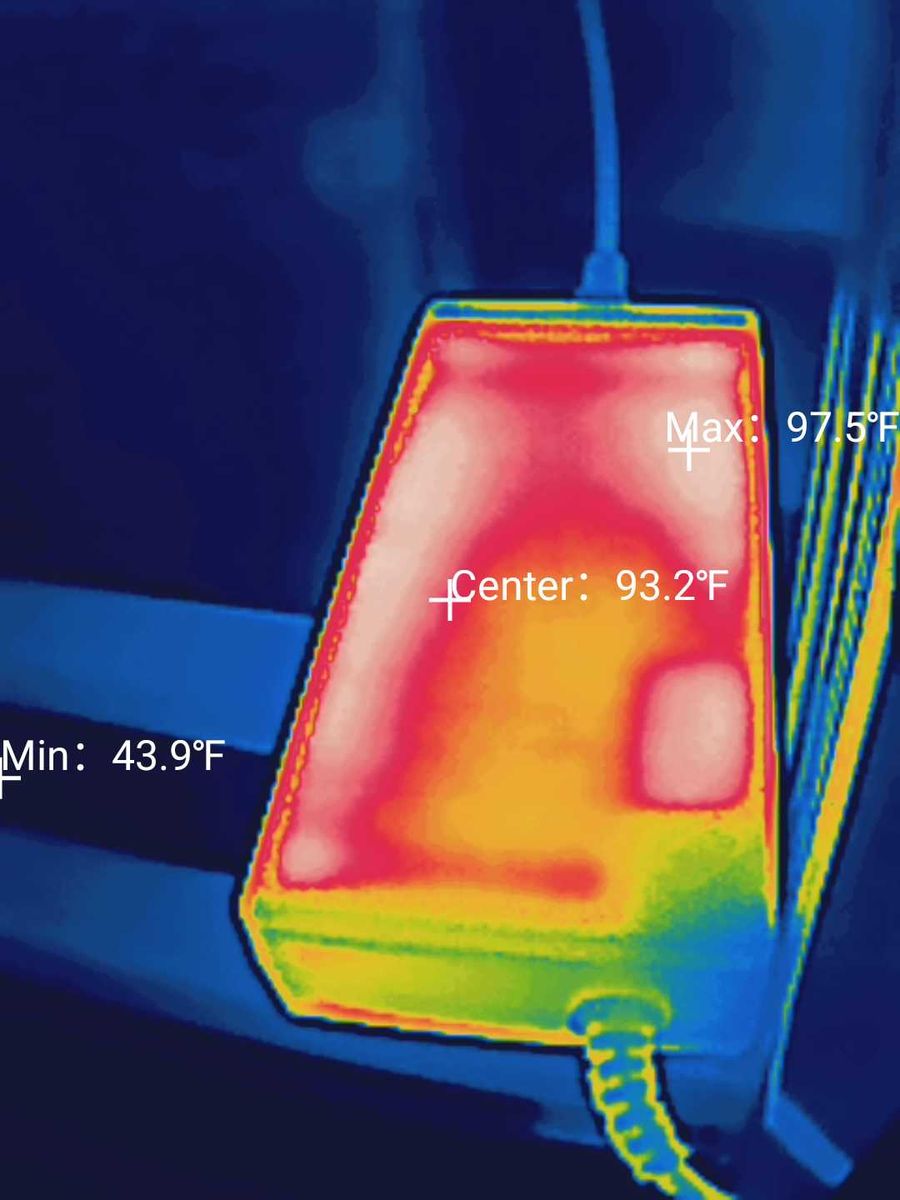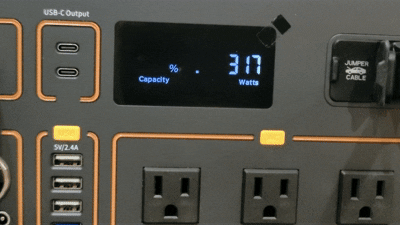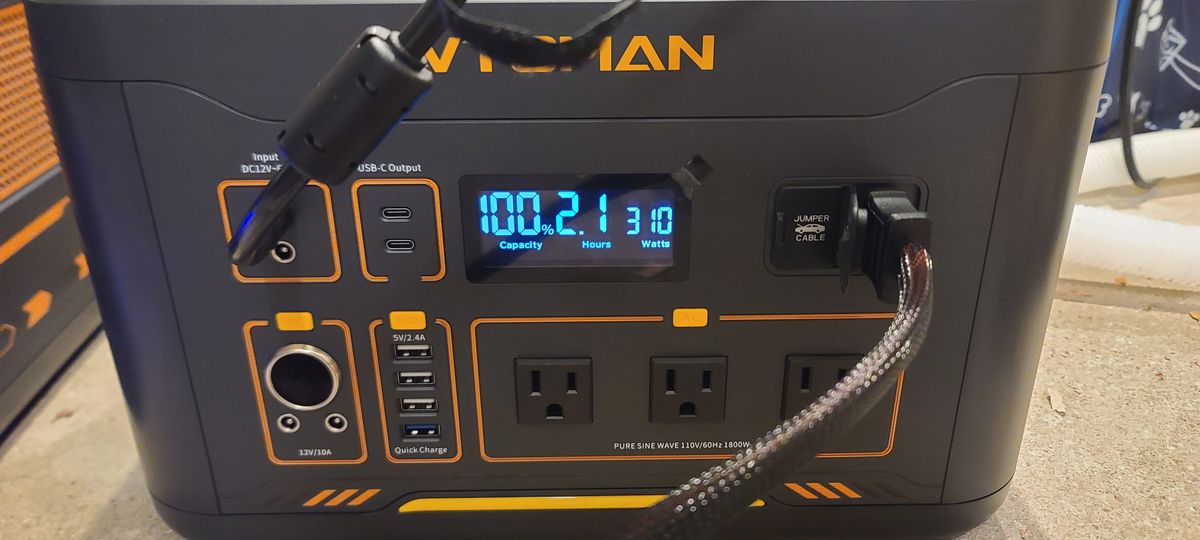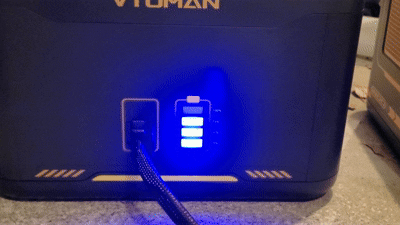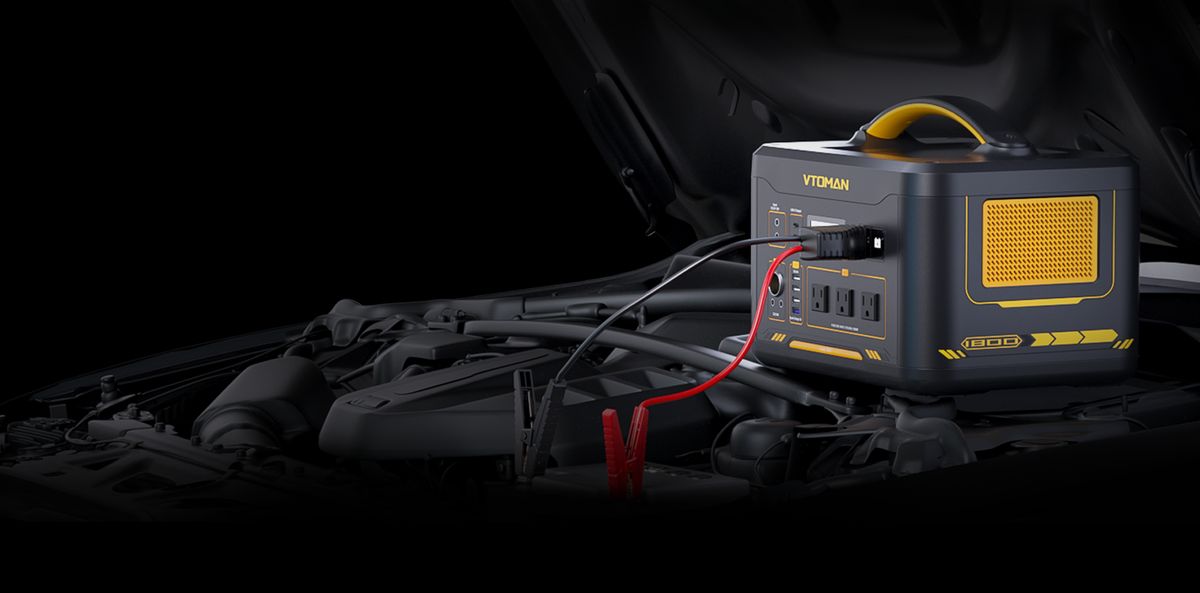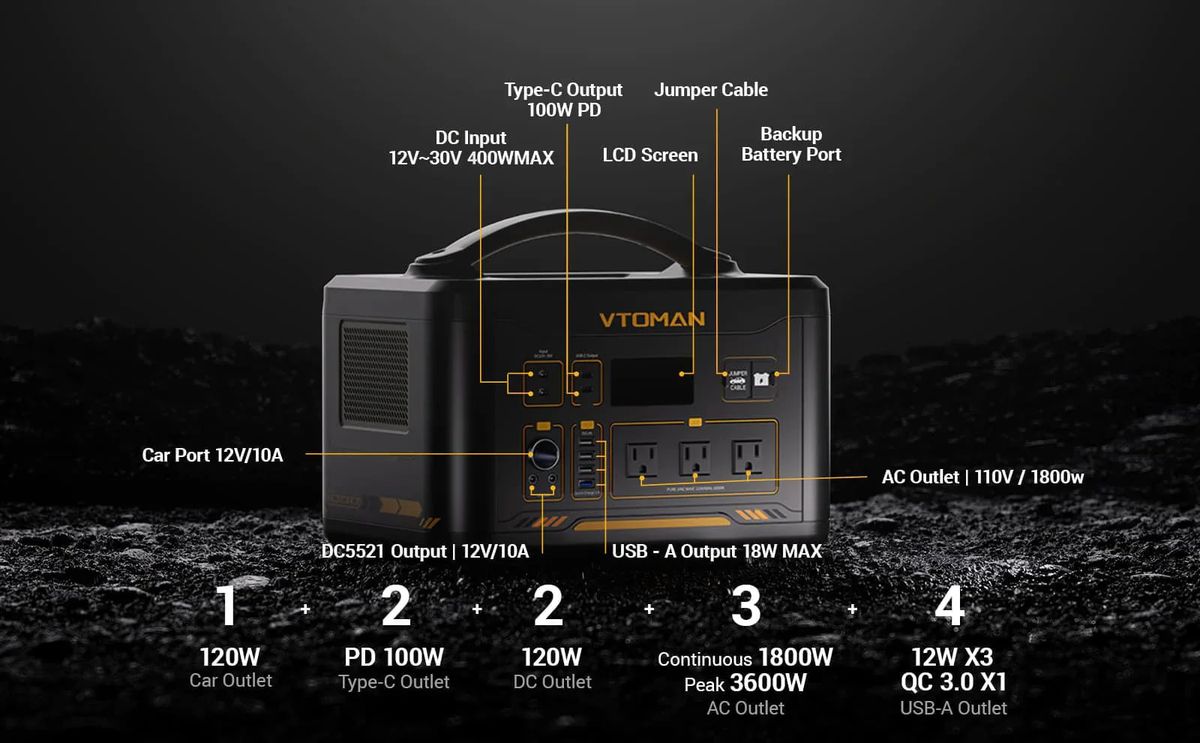VTOMAN Jump 1800 with solar panel, extended battery, and jump starter review – News 4 Social
If you buy something from a link in this article, we may earn a commission. Learn more
REVIEW – The TrekPow portable power pack I reviewed performs well for small loads when extension cords are impractical. But what if you need more power over longer periods? The VTOMAN Jump 1800 with solar panel, extended battery, and jump starter might be just your thing. I have one to review; read on to see what I think!
⬇︎ Jump to summary (pros/cons)
Price: $2,947.00 or $2,199.99
Where to buy: VTOMAN (Save $30 with code: VTUSJP18BD3 when you buy the or Jump 1800 + extra battery + 200W solar panel. Expires 5/31/25) and Amazon
What is it?
The VTOMAN Jump 1800 is a power pack that may be used for heavyweight travel, camping, and off-grid adventures. Boasting a robust 1548Wh battery capacity and a powerful 1800W output (with a peak of 3600W), it can seamlessly power various appliances, ensuring you’re never left in the dark. The unit is expandable to 3096Wh with a VTOMAN 1548Wh extra battery module. The power pack also supports pass-through solar charging and jump-starting ATVs, motorcycles, and cars. The power is stored in LiFePO4 batteries, which offer advantages over traditional lithium-ion batteries.
What’s included?
- Jump 1800 Power Station
- AC adapter and 120 V cable
- Car accessory charger
- USB A to Type C cable
- Type C to Type C cable
- User guide
- Storage Case
- Stickers
- Jumper cables (packaged separately)
- Jump 1500 Extra Battery
- CP3500 Connecting Cable
- User Guide
- Stickers
- Extra Battery Storage Case
- VS200 solar panel with integrated MC4 connector
- MC4 to DC7909 cable.
- MC4 to XT60 connector, Anderson connector, DC5521 connector.
Tech specs

Jump 1800
- Huge Output: 1800W AC Pure Sine Wave
- Huge Capacity & Capacity Expandable to 3096Wh: 1548Wh Huge Capacity
- MultiPorts Power All: 12 Outlets for Charging Multi-Devices at once
- 6X Longer Lifespan: LiFePO4 Battery with 3100+ Life Cycles to 80%
- 3 Input Modes: Wall/Solar/Car Charging
- Exclusive V-Starting: Jump starter to start a 9L gas/7L diesel car
- Exclusive V-Beyond: 3600W Peak for power overrated appliances
- Super safe LIFEBMS/Cost-effective/Multifunction
Jump 1500 Extra Battery
- 3100 + battery cycles (or 55000hours).
- Only $0.20 average cost per 1000wh.
Solar panel
- High Energy Conversion: Made from monocrystalline silicon, the panel boasts a conversion efficiency of up to 23%, outperforming conventional panels.
- Quick Setup: Includes 3 adjustable kickstands for easy ground setup and 8 circular holes for convenient hanging on balconies or RVs.
- Portable Design:Folds to a compact size of 25.6 x 23.7 x 2 inches and weighs 19.2 lbs, making it ideal for outdoor and off-grid use.
- IP67 Water Resistance: Rated IP67 for splash protection (avoid direct rain or submersion).
Design and features
Unboxing

The VTOMAN are rather large batteries, so they come in rather large boxes. The products are shipped from China, so the boxes are well-constructed to ensure safe delivery.

The outer boxes are labeled with the gross weights. (17.0 kg for the spare battery and 20.2 kg for the main unit.) The battery and extra battery have an internal retail box with full-color imagery and specifications printed on the outsides.

The battery packs are protected by foam inserts on the insides of the boxes.

The solar panel comes in a larger rectangular box. The outside of the box has specifications and a picture of the open panel printed in black ink. The solar panel box looked a little ragged from shipment, but the product inside was well-protected with foam. The jumper cables came in a separate package and were in an unlabeled cardboard box.
Assembly, Installation, Setup
All of the components come fully assembled. The main and auxiliary batteries have big bolted handles on the top, making carrying the 42 lb battery as easy as possible. Even if the handles are unbolted, the top and base of the battery packs do not make it easy to stand one on top of another. I found that the foam packaging inserts make a nice adapter to allow the auxiliary and main batteries to be stacked.

The batteries each come with a small bag to store the cables. I found that the auxiliary batter bag is big enough to store the jumper cable attachment as well.


The connection of the auxiliary battery to the main battery is done through an umbilical cable. The cable fits snugly in the port and sticks out of the front quite a bit. VTOMAN states that this cable can get hot during battery operation, so care should be taken as to where this is stored. Avoid tying it with a steel or iron wire (to prevent it from turning into an unintentional transformer) and avoid using plastics with a low melt temperature. The best bet is probably to coil it on itself so it is not in contact with flammable surfaces. The auxiliary battery cable is only about 30″ long and only allows the main and auxiliary batteries to be about 16″ apart if placed side by side. It is possible to put the cooling vents right next to each other, but this should be avoided since the percentage of open space on the vents is already limited, and the additional pressure of the adjacent pack may limit the airflow and cooling effectiveness of the fan. The umbilical cable is not too hot in the image below.

The fan is very powerful and cools the internals effectively. The fans do not operate continuously, but they are loud. You can see a 20 Deg F rise in the temperature in the images below.


The battery packs must be charged, and the VTOMAN offers solar and wall charging. VTOMAN sent a 200 W solar panel for the review, but they also sell a 400 W unit. I tested the panel on a clear sunny day.

I did have a slight shade on the panel of the left side, which may have limited the maximum conversion, but I still registered 185 W. The infrared picture shows the temperature of the panels and the coverage they are getting from the sun. You can see that the left side is cooler (less red) than the right.

There is no positioning guide on the panels to help ensure that they are perpendicular to the ecliptic, and the stand in the rear requires some traction on whatever it is positioned on. I don’t think that it will work on a sheet of ice.

The battery has a five foot cable permanently attached to the panels that stores around one side of the panel.

The cable is set up to allow series and parallel operation. The adapters that come with the panel include a five foot cable with the MC4 to XT60 connector, Anderson connector, and DC5521 connector. The cable for the MC4 to DC7909 cable is shorter; a DC5521 to DC7909 cable would have made more sense.

When not in use the solar panel has two sets of snaps that keep two of the four panels connected, but there is not a fastener to keep the remaining two panels from opening like a book. A Velcro closure sround the handle will fix this issue; it would be nice if this were included.

A benefit of the VTOMAN Jump 1800 is that it offers passthrough charging. This allows you to power items seemingly right off of the solar panel. Any solar power deficit will be provided by the battery and any excess will be used to charge the battery. In this example I am running a 1300 W heater and the solar panel and AC are providing 220 W of power. The remaining 1071 W is coming from the battery. The battery estimates at the current draw it will last another 1.3 hours.

The power supply that comes with the main battery is a 328.5 W wall charger. When plugged into the main battery, the unit registers 328 W of incoming charge. This is a good check on the accuracy of the power meter. The AC adapter can become hot during operation, which is normal considering the power output.

I noticed that there is only one charging circuit in the VTOMAN even though there are two DC inputs. This means that when using a 220 W solar panel the most power that can be used to charge the battery is 220 W. When connecting the 330 W power supply and the 220 W solar panel the power input is not 550 W.
The main battery percentage blinks as the battery is being charged. The center of the display indicates the approximate time remaining for a full charge but I found that the time underestimated the remaining time towards the end of the cycle (near 100%)

Once the main battery is filled the capacity reads 100%. The display will then show how long is required to fill the auxiliary battery.

The auxiliary battery is charged directly by the main unit. The system is programmed to charge the main battery to 100% and then charge the auxiliary battery. The auxiliary battery is the first to be discharged, and the main battery capacity is only tapped after the auxiliary battery is depleted. This strategy ensures the main battery is filled as a priority so it is always the most ready in case lugging the auxiliary battery is not an option. However, getting the main battery to 100% is difficult (because those last few percentages take the longest) and not the healthiest for the battery cells. An improvement would be if a button press on the pack could set the charging priority. When the main battery reaches 100% the auxilliary battery starts charging and is indicated by 4 bar graphic.


The jumper cable attachment for starting dead vehicle batteries only has about 10 inches of flexible cable between the adapter box and the copper clamps. Therefore, the battery must be picked up and placed near the jumper cable. Even after this demonstration of muscle, the cables may still not be long enough to reach the battery. The issue is that the cables are from a smaller product that is easily positioned near a battery, the VTOMAN X1 Jump Starter with Air Compressor. A traditional set of jumper cables must likely be used as an extension from the VTOMAN to a dead battery.

The rest of the ports on the front are well labeled and function as you would expect them to. The function button above each group needs to be pressed for the group to operate. The USB C ports are grouped with the USB A ports. The button placement for this group is inconsistent, but it allows all the buttons on the front to be mounted in a row for ease of internal assembly.
The AC receptacle is only designed for 15 amp service. The EcoFlow Delta 3, which offers similar storage and output, has a 20 amp receptacle.
The light on the back of the unit makes sense to provide a larger surface area but an odd choice because most use settings have the outlets pointed toward the direction that a light would be most beneficial. The lights have 3 brightness levels, a strobe, and an S.O.S (for asking someone to please carry this thing).
As part of the setup, I should add that VTOMAN does sell a dolly for this, but it is currently sold out.
Another improvement would be if this power pack came with a Bluetooth interface so that battery percentage and power output could be monitored remotely. This would allow the power pack to be staioned remotely without constant visits to get updates on the power levels.
Performance
‼️ This product uses a high-voltage lithium battery and poses a fire risk. Never leave the battery unattended while charging, and always disconnect the charger once the battery is full. Learn more about lithium battery safety here.
The VTOMALiN Jump 1800 and the auxiliary battery have Lithium Iron Phosphate (LiFePO4) lithium-ion batteries. These batteries are a bit different than typical LiPo batteries that are most likely in your phone and smartwatch. LiFePO4 batteries are safer, more stable, and less prone to overheating or combustion than LiPo technologies. If mishandled, they have a lower risk of swelling, overheating, or fire. The LiFePO4 do have a lower energy density compared to LiPo batteries, meaning slightly less power stored per unit weight. However, considering how big and heavy these power stations are to begin with, this seems like an acceptable trade-off. The LiFePO4 batteries are more expensive but can last up to 10 times longer based on cycle count. These batteries also perform better in extreme temperatures.
When discharging, expect about 79% efficiency on the battery capacity while using the AC output. I used a space heater as a load on the VTOMAN and used about 12300 W of heat before the battery was empty. The efficiency will vary between 70% to 85% depending on what type of load you are using and the draw.
Charging also has an efficiency penalty (Newton’s laws are still in effect). I found that a full charge takes closer to 5 hours for each of the batteries using the AC brick and can vary significantly if the solar panels are used.
I did not measure capacity with the DC power outputs. The 120 W DC car output, two 100 W USB PD outputs, and two 120 W DC5521 outputs are much more powerful than the devices I have that require this type of power. Using this power pack to charge those devices could take weeks before the power pack is empty. The USB is rated for PD, but connecting my Samsung S20 did not result in superfast charging. The specs do not indicate all of the modes the port is capable of, so I cannot determine if Superfast Charging 2.0 is available.
The display on the battery pack indicated 12 W out of the top 3 USB A ports and 36 W out of the bottom port. The good thing about the display on this is that it measures the current draw so that additional current-measuring devices are not needed.
Internal fans power on when the inside temperature requires lowering. The fans are loud and generate around 80 dB.
Final thoughts
Only recently have large-scale battery installations (and other electrical storage mediums besides chemicals, such as pumped reservoirs and gravity storage facilities) been used to store excess or emergency electrical power. With the consumer availability of portable batteries, people can be better prepared for power outages or be less reliant on noisy gas-powered generators. The VTOMAN 1800 has a powerful inverter, durable and long-lasting batteries, and large power storage, making it a good choice for someone who needs to power items while off the grid for an extended time.
What I like about VTOMAN Jump 1800 with solar panel, extended battery, and jump starter
- Jumpstarter is unique addition
- Pass through charging
- LiFePO4 batteries are safer, more stable, and less prone to overheating or combustion than LiPo technologies
What needs to be improved?
- Jumper cables are too short
- Non Stackable
- No App
Price: $2,947.00 or $2,199.99
Where to buy: VTOMAN (Save $30 with code: VTUSJP18BD3 when you buy the or Jump 1800 + extra battery + 200W solar panel. Expires 5/31/25) and Amazon
Source: The sample of this product was provided for free by VTOMAN. VTOMAN did not have a final say on the review and did not preview the review before it was published.
Check out these other power station reviews!
Check More Latest Tech News Click Here– Latest Tech News
Check More Cryptocurrency News Click Here– Latest Cryptocurrency News
REVIEW – The TrekPow portable power pack I reviewed performs well for small loads when extension cords are impractical. But what if you need more power over longer periods? The VTOMAN Jump 1800 with solar panel, extended battery, and jump starter might be just your thing. I have one to review; read on to see what I think!
⬇︎ Jump to summary (pros/cons)
Price: $2,947.00 or $2,199.99
Where to buy: VTOMAN (Save $30 with code: VTUSJP18BD3 when you buy the or Jump 1800 + extra battery + 200W solar panel. Expires 5/31/25) and Amazon
What is it?
The VTOMAN Jump 1800 is a power pack that may be used for heavyweight travel, camping, and off-grid adventures. Boasting a robust 1548Wh battery capacity and a powerful 1800W output (with a peak of 3600W), it can seamlessly power various appliances, ensuring you’re never left in the dark. The unit is expandable to 3096Wh with a VTOMAN 1548Wh extra battery module. The power pack also supports pass-through solar charging and jump-starting ATVs, motorcycles, and cars. The power is stored in LiFePO4 batteries, which offer advantages over traditional lithium-ion batteries.
What’s included?
- Jump 1800 Power Station
- AC adapter and 120 V cable
- Car accessory charger
- USB A to Type C cable
- Type C to Type C cable
- User guide
- Storage Case
- Stickers
- Jumper cables (packaged separately)
- Jump 1500 Extra Battery
- CP3500 Connecting Cable
- User Guide
- Stickers
- Extra Battery Storage Case
- VS200 solar panel with integrated MC4 connector
- MC4 to DC7909 cable.
- MC4 to XT60 connector, Anderson connector, DC5521 connector.
Tech specs
Jump 1800
- Huge Output: 1800W AC Pure Sine Wave
- Huge Capacity & Capacity Expandable to 3096Wh: 1548Wh Huge Capacity
- MultiPorts Power All: 12 Outlets for Charging Multi-Devices at once
- 6X Longer Lifespan: LiFePO4 Battery with 3100+ Life Cycles to 80%
- 3 Input Modes: Wall/Solar/Car Charging
- Exclusive V-Starting: Jump starter to start a 9L gas/7L diesel car
- Exclusive V-Beyond: 3600W Peak for power overrated appliances
- Super safe LIFEBMS/Cost-effective/Multifunction
Jump 1500 Extra Battery
- 3100 + battery cycles (or 55000hours).
- Only $0.20 average cost per 1000wh.
Solar panel
- High Energy Conversion: Made from monocrystalline silicon, the panel boasts a conversion efficiency of up to 23%, outperforming conventional panels.
- Quick Setup: Includes 3 adjustable kickstands for easy ground setup and 8 circular holes for convenient hanging on balconies or RVs.
- Portable Design:Folds to a compact size of 25.6 x 23.7 x 2 inches and weighs 19.2 lbs, making it ideal for outdoor and off-grid use.
- IP67 Water Resistance: Rated IP67 for splash protection (avoid direct rain or submersion).
Design and features
Unboxing
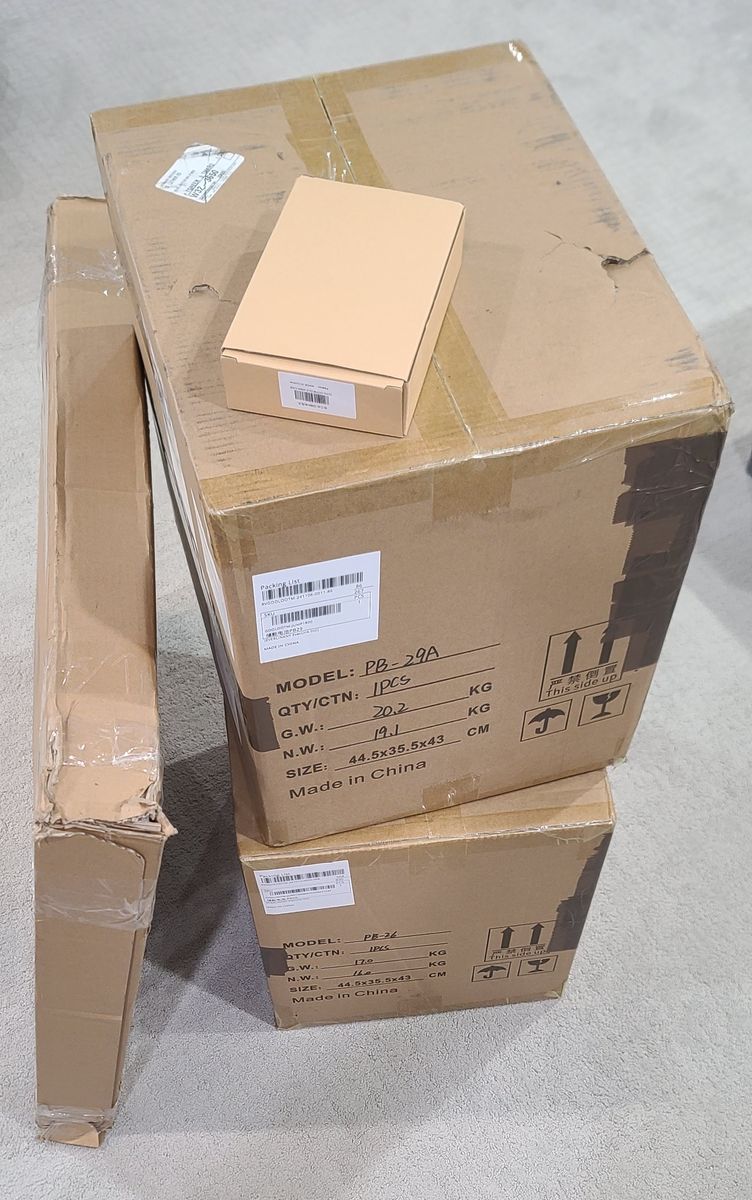
The VTOMAN are rather large batteries, so they come in rather large boxes. The products are shipped from China, so the boxes are well-constructed to ensure safe delivery.
The outer boxes are labeled with the gross weights. (17.0 kg for the spare battery and 20.2 kg for the main unit.) The battery and extra battery have an internal retail box with full-color imagery and specifications printed on the outsides.
The battery packs are protected by foam inserts on the insides of the boxes.
The solar panel comes in a larger rectangular box. The outside of the box has specifications and a picture of the open panel printed in black ink. The solar panel box looked a little ragged from shipment, but the product inside was well-protected with foam. The jumper cables came in a separate package and were in an unlabeled cardboard box.
Assembly, Installation, Setup
All of the components come fully assembled. The main and auxiliary batteries have big bolted handles on the top, making carrying the 42 lb battery as easy as possible. Even if the handles are unbolted, the top and base of the battery packs do not make it easy to stand one on top of another. I found that the foam packaging inserts make a nice adapter to allow the auxiliary and main batteries to be stacked.
The batteries each come with a small bag to store the cables. I found that the auxiliary batter bag is big enough to store the jumper cable attachment as well.
The connection of the auxiliary battery to the main battery is done through an umbilical cable. The cable fits snugly in the port and sticks out of the front quite a bit. VTOMAN states that this cable can get hot during battery operation, so care should be taken as to where this is stored. Avoid tying it with a steel or iron wire (to prevent it from turning into an unintentional transformer) and avoid using plastics with a low melt temperature. The best bet is probably to coil it on itself so it is not in contact with flammable surfaces. The auxiliary battery cable is only about 30″ long and only allows the main and auxiliary batteries to be about 16″ apart if placed side by side. It is possible to put the cooling vents right next to each other, but this should be avoided since the percentage of open space on the vents is already limited, and the additional pressure of the adjacent pack may limit the airflow and cooling effectiveness of the fan. The umbilical cable is not too hot in the image below.
The fan is very powerful and cools the internals effectively. The fans do not operate continuously, but they are loud. You can see a 20 Deg F rise in the temperature in the images below.
The battery packs must be charged, and the VTOMAN offers solar and wall charging. VTOMAN sent a 200 W solar panel for the review, but they also sell a 400 W unit. I tested the panel on a clear sunny day.
I did have a slight shade on the panel of the left side, which may have limited the maximum conversion, but I still registered 185 W. The infrared picture shows the temperature of the panels and the coverage they are getting from the sun. You can see that the left side is cooler (less red) than the right.
There is no positioning guide on the panels to help ensure that they are perpendicular to the ecliptic, and the stand in the rear requires some traction on whatever it is positioned on. I don’t think that it will work on a sheet of ice.
The battery has a five foot cable permanently attached to the panels that stores around one side of the panel.
The cable is set up to allow series and parallel operation. The adapters that come with the panel include a five foot cable with the MC4 to XT60 connector, Anderson connector, and DC5521 connector. The cable for the MC4 to DC7909 cable is shorter; a DC5521 to DC7909 cable would have made more sense.
When not in use the solar panel has two sets of snaps that keep two of the four panels connected, but there is not a fastener to keep the remaining two panels from opening like a book. A Velcro closure sround the handle will fix this issue; it would be nice if this were included.
A benefit of the VTOMAN Jump 1800 is that it offers passthrough charging. This allows you to power items seemingly right off of the solar panel. Any solar power deficit will be provided by the battery and any excess will be used to charge the battery. In this example I am running a 1300 W heater and the solar panel and AC are providing 220 W of power. The remaining 1071 W is coming from the battery. The battery estimates at the current draw it will last another 1.3 hours.
The power supply that comes with the main battery is a 328.5 W wall charger. When plugged into the main battery, the unit registers 328 W of incoming charge. This is a good check on the accuracy of the power meter. The AC adapter can become hot during operation, which is normal considering the power output.
I noticed that there is only one charging circuit in the VTOMAN even though there are two DC inputs. This means that when using a 220 W solar panel the most power that can be used to charge the battery is 220 W. When connecting the 330 W power supply and the 220 W solar panel the power input is not 550 W.
The main battery percentage blinks as the battery is being charged. The center of the display indicates the approximate time remaining for a full charge but I found that the time underestimated the remaining time towards the end of the cycle (near 100%)
Once the main battery is filled the capacity reads 100%. The display will then show how long is required to fill the auxiliary battery.
The auxiliary battery is charged directly by the main unit. The system is programmed to charge the main battery to 100% and then charge the auxiliary battery. The auxiliary battery is the first to be discharged, and the main battery capacity is only tapped after the auxiliary battery is depleted. This strategy ensures the main battery is filled as a priority so it is always the most ready in case lugging the auxiliary battery is not an option. However, getting the main battery to 100% is difficult (because those last few percentages take the longest) and not the healthiest for the battery cells. An improvement would be if a button press on the pack could set the charging priority. When the main battery reaches 100% the auxilliary battery starts charging and is indicated by 4 bar graphic.
The jumper cable attachment for starting dead vehicle batteries only has about 10 inches of flexible cable between the adapter box and the copper clamps. Therefore, the battery must be picked up and placed near the jumper cable. Even after this demonstration of muscle, the cables may still not be long enough to reach the battery. The issue is that the cables are from a smaller product that is easily positioned near a battery, the VTOMAN X1 Jump Starter with Air Compressor. A traditional set of jumper cables must likely be used as an extension from the VTOMAN to a dead battery.
The rest of the ports on the front are well labeled and function as you would expect them to. The function button above each group needs to be pressed for the group to operate. The USB C ports are grouped with the USB A ports. The button placement for this group is inconsistent, but it allows all the buttons on the front to be mounted in a row for ease of internal assembly.
The AC receptacle is only designed for 15 amp service. The EcoFlow Delta 3, which offers similar storage and output, has a 20 amp receptacle.
The light on the back of the unit makes sense to provide a larger surface area but an odd choice because most use settings have the outlets pointed toward the direction that a light would be most beneficial. The lights have 3 brightness levels, a strobe, and an S.O.S (for asking someone to please carry this thing).
As part of the setup, I should add that VTOMAN does sell a dolly for this, but it is currently sold out.
Another improvement would be if this power pack came with a Bluetooth interface so that battery percentage and power output could be monitored remotely. This would allow the power pack to be staioned remotely without constant visits to get updates on the power levels.
Performance
‼️ This product uses a high-voltage lithium battery and poses a fire risk. Never leave the battery unattended while charging, and always disconnect the charger once the battery is full. Learn more about lithium battery safety here.
The VTOMALiN Jump 1800 and the auxiliary battery have Lithium Iron Phosphate (LiFePO4) lithium-ion batteries. These batteries are a bit different than typical LiPo batteries that are most likely in your phone and smartwatch. LiFePO4 batteries are safer, more stable, and less prone to overheating or combustion than LiPo technologies. If mishandled, they have a lower risk of swelling, overheating, or fire. The LiFePO4 do have a lower energy density compared to LiPo batteries, meaning slightly less power stored per unit weight. However, considering how big and heavy these power stations are to begin with, this seems like an acceptable trade-off. The LiFePO4 batteries are more expensive but can last up to 10 times longer based on cycle count. These batteries also perform better in extreme temperatures.
When discharging, expect about 79% efficiency on the battery capacity while using the AC output. I used a space heater as a load on the VTOMAN and used about 12300 W of heat before the battery was empty. The efficiency will vary between 70% to 85% depending on what type of load you are using and the draw.
Charging also has an efficiency penalty (Newton’s laws are still in effect). I found that a full charge takes closer to 5 hours for each of the batteries using the AC brick and can vary significantly if the solar panels are used.
I did not measure capacity with the DC power outputs. The 120 W DC car output, two 100 W USB PD outputs, and two 120 W DC5521 outputs are much more powerful than the devices I have that require this type of power. Using this power pack to charge those devices could take weeks before the power pack is empty. The USB is rated for PD, but connecting my Samsung S20 did not result in superfast charging. The specs do not indicate all of the modes the port is capable of, so I cannot determine if Superfast Charging 2.0 is available.
The display on the battery pack indicated 12 W out of the top 3 USB A ports and 36 W out of the bottom port. The good thing about the display on this is that it measures the current draw so that additional current-measuring devices are not needed.
Internal fans power on when the inside temperature requires lowering. The fans are loud and generate around 80 dB.
Final thoughts
Only recently have large-scale battery installations (and other electrical storage mediums besides chemicals, such as pumped reservoirs and gravity storage facilities) been used to store excess or emergency electrical power. With the consumer availability of portable batteries, people can be better prepared for power outages or be less reliant on noisy gas-powered generators. The VTOMAN 1800 has a powerful inverter, durable and long-lasting batteries, and large power storage, making it a good choice for someone who needs to power items while off the grid for an extended time.
What I like about VTOMAN Jump 1800 with solar panel, extended battery, and jump starter
- Jumpstarter is unique addition
- Pass through charging
- LiFePO4 batteries are safer, more stable, and less prone to overheating or combustion than LiPo technologies
What needs to be improved?
- Jumper cables are too short
- Non Stackable
- No App
Price: $2,947.00 or $2,199.99
Where to buy: VTOMAN (Save $30 with code: VTUSJP18BD3 when you buy the or Jump 1800 + extra battery + 200W solar panel. Expires 5/31/25) and Amazon
Source: The sample of this product was provided for free by VTOMAN. VTOMAN did not have a final say on the review and did not preview the review before it was published.
Check out these other power station reviews!


